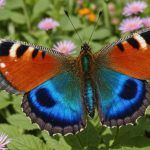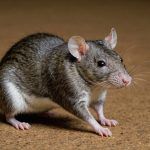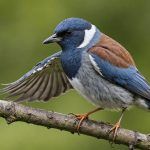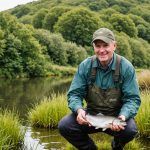Overview of Rare Bird Species in the UK
Exploring the rare birds in the UK can be a rewarding experience for avid birdwatchers. The UK avifauna includes several intriguing species that draw enthusiasts from all corners. Among these, the European Bee-eater and the Wryneck stand out. These vibrant species are occasional visitors, delighting watchers with their unique colors and behaviors. The European Bee-eater, known for its striking appearance, typically visits during the summer months, while the elusive Wryneck is often spotted during its spring and autumn migrations.
Understanding the seasonal migration patterns of these birdwatching species is crucial for successful sightings. Many rare birds follow specific routes during different times of the year, driven by changing climates and food availability. Migratory paths create a dynamic landscape, offering different bird species for observation throughout the seasons.
In the same genre : Key tactics for uk anglers: safeguarding fish populations and fostering sustainable fishing practices
Conservation efforts play a vital role in preserving these rare birds and their habitats. Organisations work tirelessly to monitor population trends, ensuring these unique species remain part of the UK’s natural heritage. By engaging in these efforts, birdwatchers contribute significantly to the conservation of rare bird species, ensuring their presence for future generations to admire.
Effective Strategies for Spotting Rare Birds
Spotting rare birds requires astute birdwatching techniques and an understanding of the environment. Prime times for birdwatching are the early morning and late afternoon when birds are most active. These periods, known as the ‘golden hours,’ offer the best chances to observe a variety of species as they feed or engage in social interaction.
Also read : Exploring UK Zoo Breeding Initiatives for the Endangered Corncrake: A Conservation Journey
While immediate results can be thrilling, successful birdwatchers know that patience is key. Developing keen observation skills allows enthusiasts to notice subtle movements and hints of colour that might signal a rare bird’s presence. Staying still and quiet can make the difference between a sighting and a missed opportunity.
Sounds play a crucial role in locating birds. Learning the calls and songs of different birdwatching species not only enhances the experience but can also be a practical tool. By identifying calls, one can pinpoint where to focus attention, often uncovering species hidden by foliage. Using recordings to provoke calls should be done judiciously, as overuse can disturb and stress wildlife.
Cultivating these skills bolsters any birdwatcher’s ability to admire the incredible diversity of UK avifauna while contributing to their knowledge and conservation efforts.
Best Locations for Birdwatching in the UK
Exploring the top birdwatching spots in the UK offers an unforgettable experience for enthusiasts seeking to observe diverse bird species. The UK boasts several key reserves and national parks renowned for their birdwatching potential. The RSPB Minsmere in Suffolk, for example, is famed for its extensive habitats attracting avian visitors throughout the year. Another significant location is the Scottish Highlands, offering sightings of Scotland’s iconic birds, such as the Scottish Crossbill.
For local birdwatchers, regional birding hotspots provide valuable opportunities. The Avalon Marshes in Somerset, with its wetlands, is ideal for observing waterbirds and other migratory species. Alternatively, Norfolk’s Cley Marshes offers marshland that draws waders and wildfowl, providing rich birdwatching experiences.
Birdwatchers can benefit immensely from maps and resources that facilitate access to these locations. The BirdTrack app is a helpful tool, offering real-time data on bird sightings and migratory patterns, thus enhancing the birdwatching experience. By utilizing these resources, birdwatchers can not only enjoy the marvels of UK avifauna but also contribute to vital conservation efforts through informed and responsible observing practices.
Essential Gear for Birdwatching
Embarking on a birdwatching adventure requires specific birdwatching equipment to enhance the experience. Must-have binoculars and scopes are crucial for getting a closer view of birdwatching species without disturbing them. When selecting binoculars, consider magnification and objective lens diameter, with 8×42 or 10×42 often recommended for their balance of power and field of view.
Having access to a field guide or app is invaluable for identifying rare birds in the UK. These tools provide detailed imagery and information, allowing birdwatchers to discern between similar species and recognize bird calls. Apps can offer the convenience of updating information on migratory patterns and top birdwatching spots.
Additional birdwatching essentials include note-taking materials, such as notebooks or digital devices, for recording sightings and observations. Cameras with telephoto lenses can capture rare moments, serving as both documentation and enjoyment.
Lastly, dressing appropriately for the weather is vital, ensuring comfort and safety. Layered, weather-resistant clothing helps adapt to changing conditions during birdwatching excursions. A comfortable backpack to carry all gear efficiently contributes to a successful venture, allowing enthusiasts to focus fully on exploring the UK’s avian wonders.
Ethical Birdwatching Practices
Adhering to responsible birdwatching practices is essential for both wildlife conservation and personal enjoyment. One cardinal rule is to minimise disturbance to birds and their habitats. This involves maintaining a respectful distance and using birdwatching equipment to avoid unsettling species. Birdwatchers should be aware that even a small disturbance can have significant impacts, especially during breeding or feeding times.
Respecting private property and protected areas is another critical aspect of ethics in birdwatching. It’s important to stick to marked paths and trails, ensuring the integrity of fragile ecosystems. Birdwatchers are also encouraged to seek permission before accessing private lands. This not only demonstrates respect for landowners but also helps foster good relationships within the birding community.
Moreover, birdwatchers play a significant role in conservation practices by participating in habitat protection and citizen science projects. Reporting sightings and contributing to bird surveys help scientists monitor species distribution and health. By following ethical guidelines, birdwatchers support the conservation of UK avifauna, ensuring that these rare birdwatching species continue to thrive for future generations.
Community Resources for Birdwatchers
To enhance your experience observing birdwatching species, connecting with the vibrant birding community offers invaluable benefits. Numerous birdwatching clubs throughout the UK unite enthusiasts under shared interests. The British Trust for Ornithology (BTO) and local societies provide platforms for learning and collaboration.
Forums for birdwatchers are vital for exchanging sightings and tips. Online communities like BirdForum enable real-time updates and foster discussions on best practices. These platforms allow both novices and experienced watchers to share their insights and amplify knowledge on UK avifauna.
Social media serves as a dynamic tool to uncover rare opportunities. Groups dedicated to birdwatching tips offer instant alerts and interactive content. Birdwatchers can engage through initiatives like #BirdingUK across other networks, enriching their understanding of birdwatching species.
Events and workshops organized by birdwatching clubs help refine skills, offering experiences beyond field guides. Citizen science projects invite watchers to contribute to conservation data by recording their sightings. Participation strengthens conservation practices, directly impacting habitat protection. Dive into these resources to immerse yourself fully in birdwatching, learn from your peers, and aid in preserving beloved avian wonders.











